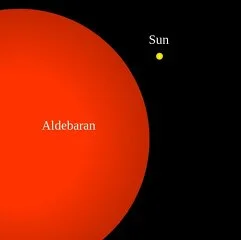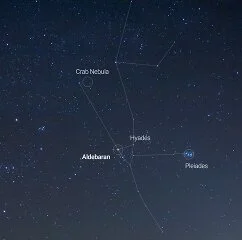The Bull's bloodshot eye
Aldebaran is such an eye-catching luminary in the dark sky, positioned within the boundaries of the Taurus constellation. It is one of the easiest stars to locate and is known for its reddish hue.
Being a red giant star means that it is much bigger and colder than our Sun. At about 65 light-years away from Earth, this star looks quite distinct, especially between late November and early December. With an apparent magnitude of 0.86, it ranks among the fifteen brightest stars in the night sky.
In Arabic, its name means "the Follower" because it usually follows the shining cluster of Pleiades when they rise in the dark.
Its interesting story, found in numerous traditions and myths, has made it one of the most well-known astronomical bodies among both ancient and contemporary stargazers.

